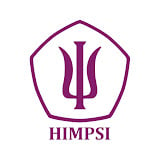GAMBARAN TENTANG SIKAP GURU TERHADAP BULLYING DI KOTA DEPOK
Abstract
Keywords
Full Text:
PDFReferences
Abelson, R. P. (1985). A variance explanation paradox: When a little is a lot. Psychological Bulletin, 97, 129–133.
Alawiyah, F. (2013). Peran guru dalam kurikulum 2013. Pusat Pengkajian, Pengolahan Data dan Informasi (P3Di).
Alfonso, A.,Andi., Febriyanti, A. et al. (2019). Konstruksi Alat Ukur Psikologi: Skala Sikap Guru terhadap Bullying.
Arifianto, B. (2018, Agustus 07). Sabet dua kali kota layak anak, Depok masih marak kekerasan. Diakses dari https://www.pikiran-rakyat.com/jawa-barat/2018/08/07/sabet-dua-kali-kota-layak-anak-depok-masih-marak-kekerasan-428439.
Arofal, Zakiyyah, I., Hudaniah, & Uun, Z. (2018). Pengaruh perilaku bullying terhadap empati ditinjau dari tipe sekolah. Jurnal Fakultas Psikologi, Universitas Muhammadiyah Malang.
Asimopoulos, C., Bibou-Nakou, I., Hatzipemou, T., & Tsiantis, E. S. (2014). An investigation into students’ and teachers’ knowledge, attitudes and beliefs about bullying in Greek primary schools. International Journal of Mental Health Promotion, 16:1, 42-52, DOI: 10.10180/14623730.2013857823.
Azwar, S. (2016). Sikap Manusia Teori dan Pengukurannya. Yogyakarta: Pustaka Pelajar.
Bauman, S. (2008). The role of elementary school counselors in redusing school bullying. The Elemantary School Journal.108,5.362-375.
Betoret, F.D. (2019). Self-efficacy, school resources, job stressors and burnout among Spanish primary and secondary school teachers: a structuralequation approach. Educational Psychology, 29:1,45-68, DOI:10.1080/01443410802459234
Bjo¨rkqvist, K., Lagerspetz, K. M. J., & Kaukiainen, A. (1992). Do girls manipulate and boys fight? Developmental trends in regard to direct and indirect aggression. Aggressive Behavior, 18, 117–127.
Bradshaw, C. (2015). Translating research to practice in bullying prevention. American Psychologist, 70, 322–332.
Brooks, J.V.O (2004). Bully busting: A teacher – led psychoeducational program to reduce bullying and victimization among elementary school students. A dissertation submitted to the graduate faculty of the university of Georgia inpartial fulfillment of requirements for degree. Athens, Georgia.
Chen, L.-M., & Chen, J.-K. (2018). Implementation and perceived effectiveness of anti-bullying strategies among teachers in Taiwan”. Educational Psychology, DOI:10.1080/01443410.2018.1482410.
Dzulkifli, & Sari, I. P. (2015). Karakteristik guru ideal. Seminar Psikologi dan Kemanusiaan. Surabaya: Psychology forum UMM.
Elisa, S., & Wrastari, A. T. (2013). Sikap guru terhadap pendidiakn inklusi ditinjau dari faktor pembentuk sikap. Jurnal Psikologi dan Pendidikan, Vol 2, No 01.
Elliot, Michele (ed). (2008). Bullying, A Practical Guide to Coping for Schools, 3 edition. London: Pearson Education in association with Kidscape.
Frey, K.S., Hirschstein, M.K., Snell, J.L., Edstrom, L.V.S., MacKenzie, E.P., & Broderick, C.J. (2005). Reducing playgorud bullying and supporting beliefs: An experimental trial of the steps to respect program. Developmental Psychology,41, 479-491
Graham, S. (2016). Victims of bullying in schools. Theory Into Practice, 55:2, 136-144, DOI: 10.1080/00405841.2016.1148988.
Gunawan, Helmi. (2007). Tindakan Kekerasan di Lingkungan Sekolah. Artikel pada pada Pikiran Rakyat (5 Juli 2007)
Hazler, R. J., Miller, D. L., Carney, D. L., & Green, S. (2001) Adult recognition of school bullying situations, Educational Research, 43:2, 133-146, DOI: 10.1080/00131880110051137
Horne, M.A., Bartollomuci, C.L., & Carlson, D. N. (2004). Elementary school bully buster program : Understanding why children bully and what to do about it. In a. Espelage, D.L., Swearer, S.M (Eds), Bullying in America schools : A social ecological perspective.
Houndoumadi, A., & Pateraki, L. (2010). Bullying and bullies in greek elementary schools: Pupils’ attitudes and teachers’/parents’ awareness. Edocational Review, 19-26 DOI: 10.1080/00131910120033619.
Irel, I. R. (2017). Hubungan sense of self dengan kecenderungan perilaku bullying pada siswa SMA di Jakarta. Psikodimensia, 16 p ISSN : 1411 - 6073 e ISSN : 2579 - 6321, 91-106.
Kasiram, M. 2008. Metodologi penelitian: Kualitatif-Kuantitatif. Malang: UIN-Malang Pers.
Klein, J., & Bentolila, A. (2018). Principals bully teachers at schools: causes, examples, and consequences. International Juornal of Leadership in Education, DOI: 10.1080/13603124.2018.1518540.
Menesini, E., & Salmivalli, C. (2017) Bullying in schools: the state of knowledge and effective interventions, Psychology, Health & Medicine, 22:sup1, 240-253, DOI: 10.1080/13548506.2017.1279740
Muhid, A., Suhadiyanto, & Nurhidayati, D. (2015). Pengembangan alat ukur psikologi. digilib.uinsby.ac.id.
Muntinanto, W. (2018, Juni 06). Siswa SD korban pelecehan guru di depok diancam nilai rendah hingga diajak jalan-jalan. Diakses dari https://news.okezone.com/read/2018/06/06/338/1907313/siswa-sd-korban-pelecehan-guru-di-depok-diancam-nilai-rendah-hingga-diajak-jalan-jalan.
National Youth Violence Prevention Resource Center. Bullying Available at: http://www.safeyouth.org/scripts/teens/bullying.asp. Accessed October 9, 2007.
Nisifianoor, M. (2009). Pendekatan Statistika Modern untuk Ilmu Sosial. Jakarta: Salemba Humanika.
Nugroho, S. (2009). Program Psikoedukasi untuk meningkatkan Pengaturan dan Ketrampilan Guru dalam Menangani Bullying. Tesis. Program Profesi Psikologi Universitas Gadjah Mada Yogyakarta. Tidak diterbitkan.
Nurita, D. (2018, Juli 23). Hari anak nasional, KPAI catat kasus bullying paling banyak. (R. Widiastuti, Penyunt.) Diakses dari https://nasional.tempo.co/read/1109584/hari-anak-nasional-kpai-catat-kasus-bullying-paling-banyak.
Olweus, D. (1993). Bullying at school: What we know and what we can do. Malden, MA: Blackwell.
Rachmah, D. N. (2014). Empati pada pelaku bullying. Jurnal Ecopy. 1, (2).
Rigby, K. (2017). How australian parents of bullied and nonbullied children see their school responding to bullying. Educational Review, DOI:10.1080/00131911.2017.1410104.
Rey, J. 2002. More than just the blues : Understanding Serious Teenage Problems. 2nd ed. Sydney: Griffin Press.
Saripah, Ipah. 2010. Model Konseling Kognitif Perilaku Untuk Menanggulangi BullyingSiswa. International Confrence on Teacher Education: Join Conference UPI dan UPSIBandung, Indonesia 8-10 November 2010.
Sari, Y. P., & Welhendri, A. (2017). Fenomena bullying siswa: Studi tentang motif perilaku bullying siswa di SMP negeri 01 Painan, Sumatera Barat. Jurnal Universitas Islam Negeri Imam Bonjol Padang, Indonesia.
SEJIWA, Y. (t.thn.). bullying-researches. Diakses pada 26 Maret, 2019, dari http://sejiwa.org
Shaw, T. D. (2013). The Forms of Bullying Scale (FBS): Validity and reliability estimates for a measure of bullying victimization and prepetration in adolescence. Psychological Assessment, DOI: 10.1037/a0032955.
Ssenyonga, J., Hermenau, K., Nkuba, M,. & Hecker, T. (2019). Stress and positive attitudes towards violent dicipline are associated with school violence by Ugandan teachers. Child Abuse & Neglect 16-26 DOI:10.1016/j.chiabu.2019.04.012
Sugiariyanti. (2009). Perilaku bullying pada anak dan remaja. Jurnal Ilmiah Psikologi Program Studi Psikologi Universitas Negeri Semarang.
Sugiyono. 2005. Metode Peneli Kuantitatif Kualitatif dan R&D. Bandung: Alfabeta.
Swearer, S. M., & Hymel, S. (2015). Understanding the psychology of bullying: Moving toward a social-ecological diathesis–stress model. American Psychologist, 70, 344–353.
Trevi, W. S. (2012). “Sikap Siswa Kelas X Smk Y Tangerang Terhadap Bullying”. Jurnal Psikologi Volume 10 Nomor 1, Juni 2012.
Yoon, J., Sulkowski, M. L., & Bauman, S. A. (2014). Teachers’ responses to bullying incidents: Effects of teacher characteristics and contexts. Journal of School Violence, DOI : 10.108/15388220.2014.963592.
(http://dapo.dikdasmen.kemdikbud.go.id). Diakses pada 21 04 2019
DOI: http://dx.doi.org/10.22441/biopsikososial.v2i2.7362
Refbacks
- There are currently no refbacks.
Copyright (c) 2020 Biopsikososial : Jurnal Ilmiah Psikologi Fakultas Psikologi Universitas Mercubuana Jakarta
JBUMBand its articles is licensed under a Creative Commons Attribution-ShareAlike 4.0 International License.
Tim Editorial Office
JBUMB
Fakultas Psikologi, Universitas Mercu Buana
Jalan Meruya Selatan No. 1, Kembangan, Jakarta Barat, 11650, Indonesia
Phone: +6281318855243
Email: [email protected]
Website: https://publikasi.mercubuana.ac.id/index.php/biopsikososial/index

















